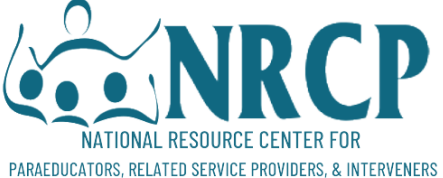- Linking Low-Income Families To Children’S Mental Health Services: An Outcome Study Koroloff, Nancy M.; and others
- Notetaking Programs: Starting Out Right! Yarger, Carmel Collum
- Roles For Education Paraprofessionals In Effective Schools: An Idea Book Leighton, Mary S.; O’Brien, Eileen; Walking Eagle, Karen; Weiner, Lisa; Wimberly, George; Youngs, Peter
- Team Approach To School Counseling: Rationale For The Use Of Paraprofessionals McCollum, Vivian J. Carroll
Linking Low-Income Families To Children’s Mental Health Services: An Outcome Study
Koroloff, Nancy M.; and others
Journal of Emotional and Behavioral Disorders; v4 n1 p2-11 Jan 1996
Available from UMI
An intervention designed to address barriers to access to children’s mental health services for low-income families was implemented in three Oregon counties. Paraprofessionals provided families with information, emotional support, and tangible assistance. Families in the intervention group (n=96) were significantly more likely to initiate children’s mental health services than families in the comparison group (n=143).
ERIC Accession Number: EJ518054
Notetaking Programs: Starting Out Right!
Yarger, Carmel Collum
Perspectives in Education and Deafness; v15 n1 p6-8,20-21 Sep 1996
Describes the roles and responsibilities of notetaking paraprofessionals in assisting students with hearing impairments. Guidelines are provided for initiating a notetaking program, including how to facilitate timely distribution of notes, organize notes, choose notetaking materials, establish work areas in each classroom, and foster student independence.
ERIC Accession Number: EJ544397
Roles For Education Paraprofessionals In Effective Schools: An Idea Book
Leighton, Mary S.; O’Brien, Eileen; Walking Eagle, Karen; Weiner, Lisa; Wimberly, George; Youngs, Peter
Policy Studies Associates, Inc., Washington, DC., 120 pp., 1997
Educational paraprofessionals can provide strong, multidimensional support for students’ academic success. The first part of this book presents information on roles for education paraprofessionals in effective schools, focusing on the history of paraprofessionals as multifaceted members of the schools staff, the work of paraprofessionals, how to assess whether paraprofessionals can help, and elements of good paraprofessional practice. The second part offers an overview of 15 effective programs nationwide that employ paraprofessionals. The programs include: early childhood education, Title I instruction, Head Start, parent participation, school employee effectiveness training, site-based management, career development, and bilingual pupil services. The third part of the book profiles the 15 effective programs in detail. The three appendixes present listings of paraprofessional job titles and descriptions, profile sites and contacts, and information on Federal student aid programs. (Contains 25 references.)
ERIC Accession Number: ED413317
Team Approach To School Counseling: Rationale For The Use Of Paraprofessionals
McCollum, Vivian J. Carroll
15 pp., 1996
School counselors’ duties have multiplied over the years, requiring counselors to be involved with nearly every aspect of school operation. Ways in which paraprofessionals can help school counselors meet these demands are described in this paper. Counselors must provide crisis intervention, group and individual counseling, classroom guidance, consultation with other school staff and parents, coordination of community activities, scheduling, record keeping, and a host of other services. Many of these tasks, it is suggested, can be completed by a trained paraprofessional, leaving the counselor available to deal with the increasing numbers of intervention-seeking students. These paraprofessionals, who are trained or skilled in human services, work alongside the professional counselor, serving as guidance aides, clerical aides, and coordination aides. Such duties can then free counselors to fulfill their primary duties, such as the counseling function, the consultation function, and the coordination function, in which they act as a liaison between school and community agencies. Some guidelines for implementing a counselor/paraprofessional relationship are offered. School counselors are advised to persuade administrators that a team approach to counseling can result in more effective service.
ERIC Accession Number: ED412478
